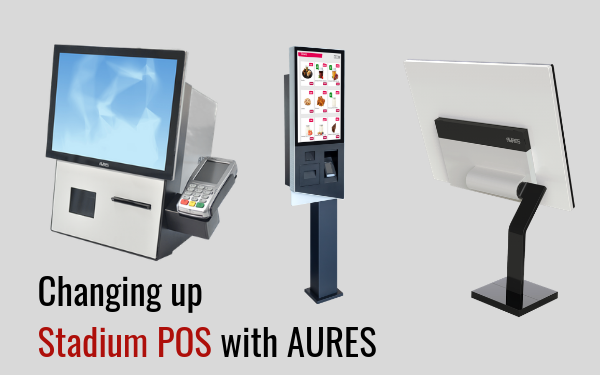By Paul HUDSON, AURES UK Business Development Manager
Football is a game of intense bursts of activity – adrenaline, passion and excitement crammed into 90 minutes. When the whistle goes, when the stadium empties, there’s nothing left but to pick over the events of the last match and look forward to the next.
It is a rhythm that dominates the experience of football fans, players, coaches and clubs the world over. It is also something that makes, from a commercial perspective, the football stadium a peculiar kind of business asset – one that may only be in use for a few hours every couple of weeks.
In the modern era of multi-million-pound high tech stadiums, allowing such a key asset to lay dormant for such a high percentage of the time is not something most professional clubs can afford any longer. They simply have to find ways to generate revenues from their stadia outside match days.
That is why modern football stadiums are used for so many things beyond football. Clubs now routinely hire out their facilities for everything from business conferences to weddings, following in the footsteps of hotels and other hospitality operators. The main assets, i.e. the playing area itself, might be repurposed between games to host other sports, or utilised in the close season for arena-sized pop and rock concerts.
All of this creates new operational demands on stadium operators. And one of the most critical areas where this is apparent is the demands it places on stadium point of sale systems.
The new need for flexibility
Stadium EPOS already has to serve multiple purposes. It has to handle ticket sales which, in the modern era, also requires close integration with online sales channels plus electronic barcode readers on the gates. It is used in concessions selling food and drink to fans on match days, in club and hospitality suite bars, and in retail outlets selling club merchandise.
Extending the uses of stadia adds to the demands on the flexibility of its EPOS systems. Even if a club does need an integrated platform to handle ticketing, catering and retail operations, as long as they are all focused around match days, things are still relatively predictable – ticket sales and the number of attendees will fall within stable parameters, you will sell roughly consistent volumes of the same food and drink products, all merchandise sales will be for club goods and so on.
Things change when you hire out facilities for external events, or you host another sport or another form of entertainment altogether like a rock concert. Suddenly you’re dealing with different footfall, different purchase volumes for food and drink, different types of merchandise being sold. Ticketing systems have to be flexible to allow for the fact that concert-goers might be standing on the pitch, increasing numbers and falling outside the usual seat allocation process. Merchandising systems have to be flexible enough to quickly integrate with product lists from new suppliers for a one-off event, with stock control for catering adjusting for whatever fluctuations in footfall occur.
Mobile-POS
From a hardware perspective, Mobile-POS (M-POS) devices are becoming increasingly popular among stadium operators for the added flexibility they offer in terms of where and how you can serve customers. Although food and drink concessions and ticketing form the core of stadium commerce, branded merchandise retail is an important additional revenue strand. Particularly for non-core events – e.g. concerts, guest hosting of other sports – you can’t rely on the club shop for retail sales, you need to have the infrastructure in place to support pop-up stalls around the venue. M-POS devices that link in with the main stadium EPOS system mean sales can not only be processed, but all data from them can be logged and reported on centrally.
Finally, POS systems and M-POS devices both require a third key ingredient – reliable connectivity. With wireless becoming the new standard (especially for mobile devices), and 4G bandwidth likely to be quickly saturated during events with thousands of attendees looking to get online on their smartphones, stadiums increasingly rely on high availability private wireless networks to ensure their EPOS systems keep running and the high volumes of payments can be processed without a hitch.
Reducing queues
From a customer’s point of view, he or she is there to watch the football. Yes, hunger pains or thirst may set in and then “where’s the shortest queue”, “can I be back in time”, “can I pre-order so that it’s all ready”, “shall I spontaneously treat my family”. All of this can be significantly helped by the POS or M-POS solution.
Also, as stadiums advance to full contact-less and the use of 5G networks, that can really speed up those very queues.




